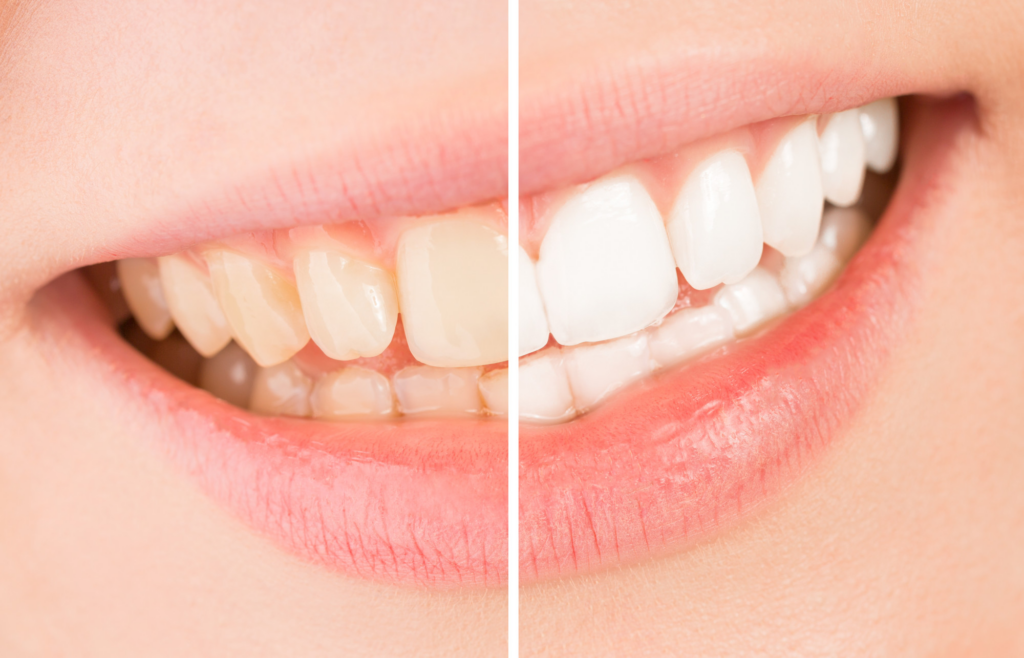How to Remove Coffee Stains from Teeth: Your Ultimate Guide to a Brighter Smile
How to Remove Coffee Stains from Teeth
A. Many of us enjoy starting our day with a cup of coffee, savoring its rich flavor and invigorating aroma How to Remove Coffee Stains from Teeth. However, this beloved beverage comes with a downside: coffee stains on teeth. These stubborn stains can gradually accumulate over time, leaving our smiles looking less vibrant and diminishing our confidence.
B. Maintaining a bright smile isn’t just about aesthetics; it’s also essential for self-esteem and overall oral health. A dazzling smile can boost confidence in social and professional settings, leaving a lasting impression on others. Additionally, proper dental care contributes to a healthy mouth, reducing the risk of dental issues like cavities and gum disease.
C. In this comprehensive guide, we’ll explore various methods to effectively remove coffee stains from teeth. From simple home remedies to professional treatments, we’ll discuss the pros and cons of each approach, empowering you to choose the best solution for achieving a brighter, stain-free smile. Whether you’re seeking budget-friendly options or prefer the expertise of dental professionals, this guide has you covered. Let’s dive in and uncover the secrets to reclaiming your radiant smile!
Coffee is a beloved morning ritual for millions around the world, but it comes with an unfortunate side effect: stains on our teeth. How to Remove Coffee Stains from Teeth. These stubborn stains can detract from our smiles and erode our confidence. In this comprehensive guide, we’ll explore the causes of coffee stains, effective remedies, preventive measures, and lifestyle changes to ensure a brighter, stain-free smile.
How to Remove Coffee Stains from Teeth
What Causes Coffee Stains on Teeth?

Coffee stains on teeth are primarily caused by chromogens, which are intensely pigmented molecules found in coffee. These chromogens adhere to the enamel—the outermost layer of the teeth—when we consume coffee. Additionally, coffee contains acids that can erode tooth enamel, making it more susceptible to staining. As a result, regular consumption of coffee can lead to the gradual buildup of stains on the teeth, affecting their appearance and brightness.
B. The Science Behind Tooth Discoloration Tooth discoloration, including coffee stains, occurs due to two main factors: extrinsic and intrinsic staining. Extrinsic staining refers to stains on the surface of the teeth, caused by external factors like food, beverages, and smoking. In the case of coffee stains, the pigmented molecules from coffee adhere to the enamel, resulting in extrinsic discoloration. On the other hand, intrinsic staining occurs within the tooth structure and may be caused by factors like aging, genetics, or certain medications. Understanding the distinction between extrinsic and intrinsic staining is crucial for effectively targeting and removing coffee stains from teeth.
C. Effects of Coffee Consumption on Dental Health While enjoying a cup of coffee can provide a much-needed energy boost, excessive consumption can have adverse effects on dental health. Coffee is acidic, and frequent exposure to acidic substances can weaken tooth enamel over time, making it more susceptible to staining and decay. Furthermore, the high caffeine content in coffee can contribute to dry mouth, reducing saliva production and increasing the risk of plaque buildup and cavities. By understanding the potential effects of coffee consumption on dental health, individuals can make informed decisions about their oral care routine and take proactive steps to prevent and remove coffee stains from teeth.
Home Remedies for Coffee Stain Removal
Baking Soda and Hydrogen Peroxide Paste
- Baking soda, with its mild abrasive properties, and hydrogen peroxide, known for its bleaching effect, form a potent combination for removing coffee stains from teeth.
- Step-by-Step Guide:
- Mix one tablespoon of baking soda with enough hydrogen peroxide to form a paste.
- Apply the paste to a toothbrush and gently brush your teeth for about two minutes.
- Rinse thoroughly with water.
- Use this paste 2-3 times per week for best results.
- Safety Precautions and Frequency of Use:
- Avoid excessive use of this paste, as overuse can lead to enamel erosion.
- Rinse your mouth thoroughly after using the paste to remove any residue.
- Limit use to 2-3 times per week to prevent damage to tooth enamel.
- Step-by-Step Guide:
Oil Pulling with Coconut Oil
- Oil pulling is an ancient practice that involves swishing oil around in the mouth to remove toxins and bacteria. Coconut oil, with its antimicrobial properties, is particularly effective for promoting oral health and removing coffee stains.
- Explanation of Oil Pulling and Its Benefits:
- Oil pulling helps to draw out impurities and bacteria from the teeth and gums, promoting oral hygiene and reducing the risk of stains.
- Coconut oil contains lauric acid, which has antimicrobial properties that can help combat bacteria responsible for tooth discoloration.
- How to Incorporate Coconut Oil into Your Oral Care Routine:
- Take one tablespoon of coconut oil and swish it around in your mouth for 15-20 minutes.
- Spit out the oil and rinse your mouth thoroughly with water.
- Repeat this process daily, preferably in the morning before brushing your teeth, for optimal results.
- Explanation of Oil Pulling and Its Benefits:
Apple Cider Vinegar Rinse
- Apple cider vinegar is acidic and contains acetic acid, which has natural bleaching properties that can help remove coffee stains from teeth.
- Dilution Ratio and Application Method:
- Mix one part apple cider vinegar with two parts water to dilute its acidity.
- Swish the diluted solution around in your mouth for about 30 seconds.
- Spit out the solution and rinse your mouth thoroughly with water.
- Use this rinse once a day, preferably before brushing your teeth.
- Potential Risks and Considerations:
- Apple cider vinegar is highly acidic and can weaken tooth enamel if used undiluted or excessively.
- To minimize the risk of enamel erosion, always dilute apple cider vinegar before use and avoid prolonged exposure to the teeth.
- If you experience any irritation or sensitivity, discontinue use and consult your dentist.
- Dilution Ratio and Application Method:
Over-the-Counter Products
Whitening Toothpaste
- Whitening toothpaste is specifically formulated to remove surface stains and lighten the color of teeth over time.
- How Whitening Toothpaste Works:
- Whitening toothpaste typically contains abrasive particles or chemical agents that help to scrub away surface stains.
- Some whitening toothpaste also contain mild bleaching agents like hydrogen peroxide or carbamide peroxide, which can penetrate the enamel to lighten deeper stains.
- Recommendations for Effective Products:
- Look for whitening toothpaste that carries the American Dental Association’s (ADA) Seal of Acceptance, ensuring its safety and effectiveness.
- Choose a toothpaste with fluoride to help strengthen tooth enamel and prevent cavities.
- Opt for a toothpaste that suits your specific needs, such as sensitivity relief or tartar control, in addition to whitening properties.
- How Whitening Toothpaste Works:
Whitening Strips

- Whitening strips are thin, flexible strips coated with a bleaching agent, typically hydrogen peroxide, that adhere to the surface of the teeth to remove stains and lighten tooth color.
- Step-by-Step Instructions for Application:
- Ensure your teeth are clean and dry before applying the whitening strips.
- Peel the strips from the backing and align them with your gumline, pressing them firmly onto the front surface of your teeth.
- Wear the strips for the recommended duration, usually 30 minutes to an hour, depending on the product instructions.
- Remove the strips and discard them, then rinse your mouth thoroughly with water.
- Duration and Expected Results:
- Most whitening strips are designed for daily use over a period of one to two weeks to achieve noticeable results.
- Results may vary depending on the severity of stains and individual factors such as tooth enamel thickness and diet.
- Whitening strips can typically lighten teeth by several shades, providing a visibly brighter smile with consistent use.
- Step-by-Step Instructions for Application:
By incorporating over-the-counter whitening products like whitening toothpaste and whitening strips into your oral care routine, you can effectively remove coffee stains from teeth and achieve a brighter, more confident smile.
Professional Treatments
Professional Teeth Whitening
- Professional teeth whitening procedures are performed by dental professionals and offer faster and more dramatic results compared to over-the-counter methods.
- Types of Professional Whitening Procedures:
- In-office whitening: This procedure involves applying a high-concentration bleaching agent to the teeth, often activated by a special light or laser to accelerate the whitening process.
- Take-home whitening kits: Custom-fitted trays filled with a bleaching gel are provided by the dentist for at-home use. These kits typically contain lower concentrations of bleaching agents but offer convenience and flexibility.
- Costs and Considerations:
- The cost of professional teeth whitening varies depending on the type of procedure, the dentist’s expertise, and geographic location.
- In-office whitening tends to be more expensive than take-home kits but provides immediate results.
- Considerations include potential tooth sensitivity and the need for touch-up treatments to maintain results over time.
- Types of Professional Whitening Procedures:
Dental Cleaning and Polishing

- Regular dental visits for professional cleaning and polishing are essential for maintaining optimal oral health and removing stubborn coffee stains from teeth.
- Importance of Regular Dental Visits:
- Dental check-ups and cleanings every six months help prevent oral health issues such as cavities, gum disease, and plaque buildup.
- During a dental cleaning, a dental hygienist will use specialized tools to remove tartar and plaque from the teeth, including surface stains caused by coffee consumption.
- Benefits of Professional Cleaning for Stain Removal:
- Professional cleanings effectively remove surface stains, tartar, and plaque that cannot be eliminated through regular brushing and flossing alone.
- Polishing the teeth after cleaning helps smooth out the tooth surface, making it more resistant to future staining.
- Dental professionals can provide personalized advice on maintaining oral hygiene and recommend additional treatments for stubborn stains or discoloration.
- Importance of Regular Dental Visits:
By seeking professional teeth whitening treatments and scheduling regular dental cleanings, individuals can effectively remove coffee stains from teeth and achieve a brighter, healthier smile.
Prevention Tips
Limiting Coffee Consumption
- Limiting coffee consumption is one of the most effective ways to prevent coffee stains from accumulating on teeth.
- Consuming coffee in moderation reduces the frequency of exposure to the pigmented molecules and acidic compounds that cause staining.
- Consider reducing the number of cups of coffee consumed per day or opting for lighter-colored coffee drinks to minimize the risk of staining.
Drinking Water After Coffee
- Drinking water after consuming coffee helps to rinse away residue and dilute the pigmented molecules that can cling to tooth enamel.
- Swishing water around in the mouth after drinking coffee helps to neutralize acidity and prevent it from eroding tooth enamel.
- Encourage individuals to make it a habit to drink a glass of water after finishing their coffee to promote oral health and reduce the likelihood of staining.
Regular Dental Hygiene Practices
- Regular dental hygiene practices, including brushing and flossing, are essential for maintaining oral health and preventing coffee stains from becoming deeply embedded in tooth enamel.
- Brushing teeth at least twice a day with fluoride toothpaste helps to remove surface stains and plaque buildup.
- Flossing daily removes food particles and plaque from between teeth, preventing the formation of tartar and reducing the risk of staining in hard-to-reach areas.
- Additionally, using an antibacterial mouthwash can help kill bacteria and freshen breath, contributing to overall oral hygiene and stain prevention.
By implementing these prevention tips into their daily routine, individuals can reduce the occurrence of coffee stains on teeth and maintain a brighter, healthier smile.
Conclusion
- Throughout this guide, we’ve explored a variety of methods to effectively remove coffee stains from teeth. From home remedies like baking soda paste and oil pulling to over-the-counter products such as whitening toothpaste and strips, as well as professional treatments like teeth whitening and dental cleanings, there are numerous options available to brighten your smile and eliminate coffee stains.
- Maintaining oral hygiene is paramount not only for removing coffee stains but also for overall dental health. Consistent brushing, flossing, and regular dental check-ups are essential habits that help prevent stains, cavities, gum disease, and other oral issues. By prioritizing oral hygiene, individuals can enjoy a confident smile and optimal dental well-being.
- It’s important to remember that everyone’s dental needs and preferences are unique. While some may find success with home remedies, others may benefit more from professional treatments. Experimenting with different methods and finding what works best for you is key to achieving desired results. Additionally, consulting a dentist for personalized advice and professional guidance can help tailor a treatment plan to address specific concerns and ensure safe, effective stain removal.
In conclusion, by incorporating a combination of preventive measures, home remedies, and professional treatments, individuals can effectively remove coffee stains from teeth and maintain a bright, healthy smile. Remember to prioritize oral hygiene, explore various options, and consult a dentist for personalized recommendations to achieve the best results. With dedication and proper care, you can
enjoy a stain-free smile and confidently indulge in your favorite cup of coffee.
Also Read: Unveiling the Breville Bambino Espresso Machine: The Ultimate Guide






